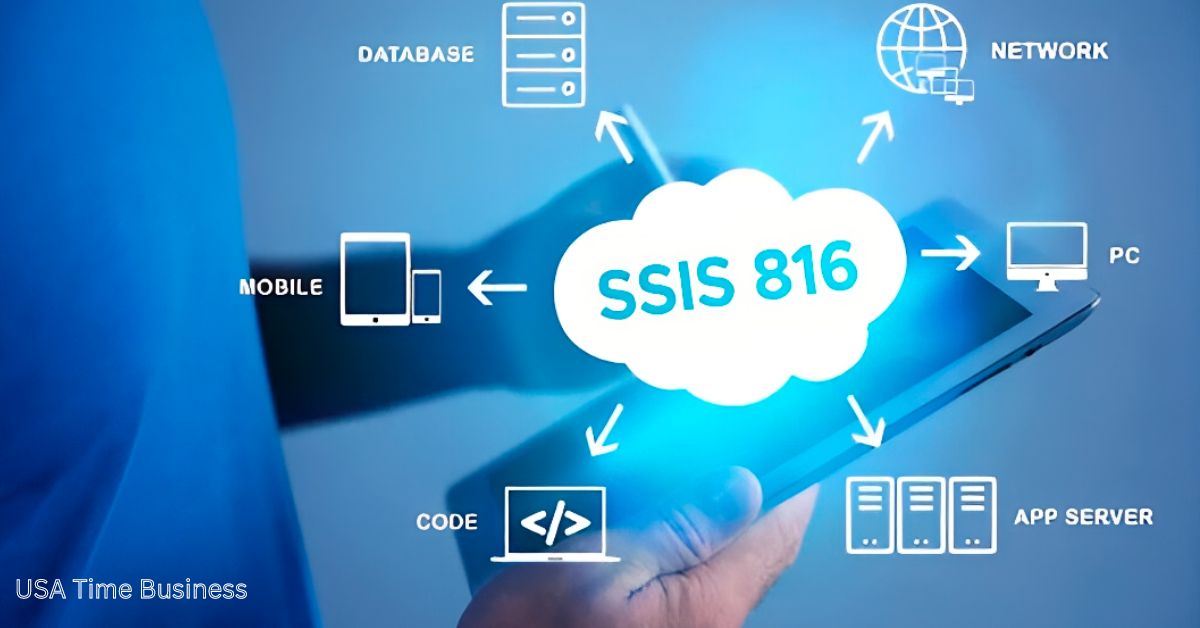Contents
- 1 Introduction to SSIS 816
- 2 Understanding SSIS 816’s Capabilities
- 3 Setting Up and Installing SSIS 816
- 4 Essential Functions and Features of SSIS 816
- 5 Creating a Simple Data Integration Project with SSIS 816
- 6 Advanced Techniques and Tips for Using SSIS 816
- 7 Troubleshooting Common Issues in SSIS 816
- 8 Real-Life Examples of Successful Implementations with SSIS 816
- 9 Resources for
- 10 conclusion
- 11 FAQs
Introduction to SSIS 816
Welcome to the world of data integration mastery with SSIS 816! If you’re ready to unleash the power of this robust tool, you’ve come to the right place.
This step-by-step tutorial will dive deep into understanding SSIS 816′s capabilities, setting it up like a pro, and exploring essential functions and advanced techniques.
Get ready to transform your data integration projects and elevate your skills with SSIS 816 – let’s embark on this exciting journey together!
Understanding SSIS 816’s Capabilities
SSIS 816, also known as SQL Server Integration Services, is a powerful data integration tool developed by Microsoft. Its capabilities go beyond just moving and transforming data – it can automate workflows, handle complex ETL processes, and even perform real-time data integration tasks.
One of the critical strengths of SSIS 816 is its ability to connect to a wide range of data sources and destinations, making it versatile for various projects. From databases to flat files to cloud services, SSIS can seamlessly integrate with different systems without hassle.
Moreover, SSIS 816 offers robust debugging and monitoring features that allow developers to track the execution of packages in real time. This visibility into the workflow helps identify bottlenecks or issues early in the process.
With its rich tools and functionalities, SSIS 816 empowers organizations to streamline their data integration tasks efficiently. Whether you’re migrating data between systems or building complex workflows, SSIS provides the flexibility and scalability needed for modern data projects.
Setting Up and Installing SSIS 816
Setting up and installing SSIS 816 is crucial in unleashing its power for your data integration needs. First, ensure you have the necessary system requirements before installing. Download the SSIS 816 setup files from a reliable source to avoid any potential issues during installation.
Once the setup files are ready, run the installer and follow the on-screen instructions carefully. Choose your preferred installation options according to your specific requirements and preferences. Pay attention to details such as selecting the correct destination folder for installation and configuring any additional settings as needed.
After completing the installation process, it’s advisable to perform a thorough check to verify that SSIS 816 has been installed successfully without any errors or complications. Take the time to familiarize yourself with the software interface and explore its features to maximize its capabilities effectively.
Essential Functions and Features of SSIS 816
SSIS 816 offers many essential functions and features that make data integration tasks seamless. Its user-friendly interface allows users to easily design workflows to extract, transform, and load data from various sources. The drag-and-drop functionality allows for the quick creation of pipelines without extensive coding knowledge.
One key feature of SSIS 816 is its robust connectivity options, enabling users to access a wide range of databases and file formats. The built-in transformations make it easy to manipulate data during the ETL process efficiently.
Error handling capabilities in SSIS 816 allow users to set up custom error flows, ensuring data integrity throughout the integration process. Task scheduling features enable automated workflows at specified intervals, reducing manual intervention.
SSIS 816 empowers users with essential tools and functionalities to streamline their data integration processes effectively.
Creating a Simple Data Integration Project with SSIS 816
So, you’ve got your hands on SSIS 816 and are ready to create a simple data integration project. Let’s get started.
First things first, open up SSIS 816 and create a new project. Choose the Integration Services Project template to begin building your data integration solution.
Next, add a Data Flow Task to your control flow. This task will be the heart of your project, where you’ll define how data moves from source to destination.
Add a source component like OLE DB or Excel Source to the Data Flow Task. Connect this to a destination component such as OLE DB Destination or Flat File Destination.
Map the columns from the source to the destination and configure any necessary transformations between them using components like Derived Columns or Conditional Split.
Execute your package to see your data flowing smoothly through each step of the integration process. Voilà! You’ve created a simple yet effective data integration project with SSIS 816.
Advanced Techniques and Tips for Using SSIS 816
Are you ready to take your SSIS 816 skills to the next level? Let’s dive into some advanced techniques and tips that will help you unleash the full power of this data integration tool.
One essential technique is customizing your data flow using script tasks and components with C# or VB.
NET scripting capabilities: you can manipulate data in unique ways that standard transformations may not cover.
Another tip is to leverage package configurations effectively. By storing configuration settings outside of the package, you can quickly deploy packages across different environments without making manual adjustments each time.
Don’t overlook event handling – by setting up event handlers within SSIS; you can automate responses to specific events during package execution, improving efficiency and error handling.
Consider parameterizing your connections and expressions for more dynamic control over your packages. This allows for greater flexibility in adapting to changing requirements without needing extensive modifications.
Troubleshooting Common Issues in SSIS 816
Are you having trouble with SSIS 816? Don’t worry; we’ve got you covered! When encountering issues during the data integration process, it’s essential to troubleshoot effectively. One familiar problem users face is package execution failures due to connection manager errors. Double-check your configurations and ensure all connections are correctly set up.
Another frequent issue is data conversion problems that lead to unexpected results in your output. Verify the data types and ensure they match the source and destination requirements. Additionally, insufficient memory allocation can cause performance issues and slow processing speeds. Adjusting memory settings within SSIS can help optimize performance.
If you’re experiencing package validation errors, review your expressions and constraints for any discrepancies or syntax errors. Watch for compatibility issues with different versions of SQL Server when deploying packages across environments. Addressing these common challenges head-on will streamline your SSIS workflow for seamless data integration experiences.
Real-Life Examples of Successful Implementations with SSIS 816
Imagine a large retail company streamlining its inventory management by integrating data from various sources using SSIS 816. With this powerful tool, they could automate the process, saving time and reducing errors significantly.
In another scenario, a healthcare organization utilized SSIS 816 to merge patient information from different databases into one cohesive system. This improved efficiency and enhanced patient care by providing a comprehensive view of each individual’s medical history.
Moreover, a financial institution successfully implemented SSIS 816 to consolidate data from multiple branches and generate detailed reports for better decision-making. The seamless integration and transformation capabilities of SSIS 816 played a crucial role in optimizing their operations.
These real-life examples demonstrate the versatility and effectiveness of SSIS 816 in empowering businesses across various industries to harness the power of data integration for improved performance and outcomes.
Resources for
Are you looking to dive deeper into SSIS 816? Here are some valuable resources to expand your knowledge and skills. Online forums like Stack Overflow and SQLServerCentral are great places to seek advice from experienced users and find solutions to common issues.
For in-depth tutorials and guides, websites like Microsoft Docs offer comprehensive documentation on SSIS 816 features, functions, and best practices. You can also explore online courses on platforms such as Udemy or Coursera to enhance your understanding of data integration with SSIS 816.
Additionally, attending conferences or webinars dedicated to SQL Server Integration Services can provide valuable insights from industry experts and real-world case studies. Remember books! Plenty of publications cover advanced topics in SSIS development for those who prefer offline learning.
By leveraging these resources, you can stay updated on the latest trends in SSIS 816 and continuously improve your data integration skills.
conclusion
As we wrap up our exploration of SSIS 816, it’s evident that this powerful tool has the potential to revolutionize data integration processes. From its user-friendly interface to its advanced capabilities, SSIS 816 offers a comprehensive solution for businesses looking to streamline their data management tasks.
By delving into the intricacies of setting up and utilizing SSIS 816 effectively, users can harness its full potential and unlock endless possibilities for enhancing efficiency and productivity. With real-life examples showcasing successful implementations of SSIS 816 in various industries, it becomes clear that this tool is not just a theoretical concept but a practical asset with tangible benefits.
As you continue your journey with SSIS 816, remember to stay curious, experiment with different techniques, and don’t be afraid to push the boundaries of what is possible. The world of data integration is constantly evolving, and by staying proactive and innovative in your approach, you can leverage SSIS 816 to drive transformative change within your organization.
FAQs
As you dive into the world of SSIS 816, it’s common to have questions. Let’s address some of the frequently asked ones:
1. What is the primary purpose of SSIS 816?
SSIS 816 is a powerful tool for data integration and workflow applications. It allows users to extract, transform, and load data from various sources.
2. Is SSIS 816 suitable for beginners?
Yes, even beginners can start using SSIS 816 with its user-friendly interface and step-by-step tutorials available online.
3. Can I schedule tasks in SSIS 816?
Absolutely! To automate processes, you can set up schedules for your data integration projects in SSIS 816.
4. How can I monitor the performance of my SSIS packages?
SSMS (SQL Server Management Studio) provides tools to monitor package execution and performance metrics.
5. Are there any limitations to consider when using SSIS 816?
While versatile, users may need additional components or plugins for complex requirements beyond what comes standard with SSIS 816.
Remember that practice makes perfect when it comes to mastering SSIS 816. Don’t hesitate to explore different features and functionalities as you grow more confident in utilizing this robust software!
Explore the endless possibilities that await you with every project you embark on using SQL Server Integration Services version 2016 (SSRS). Happy integrating!











